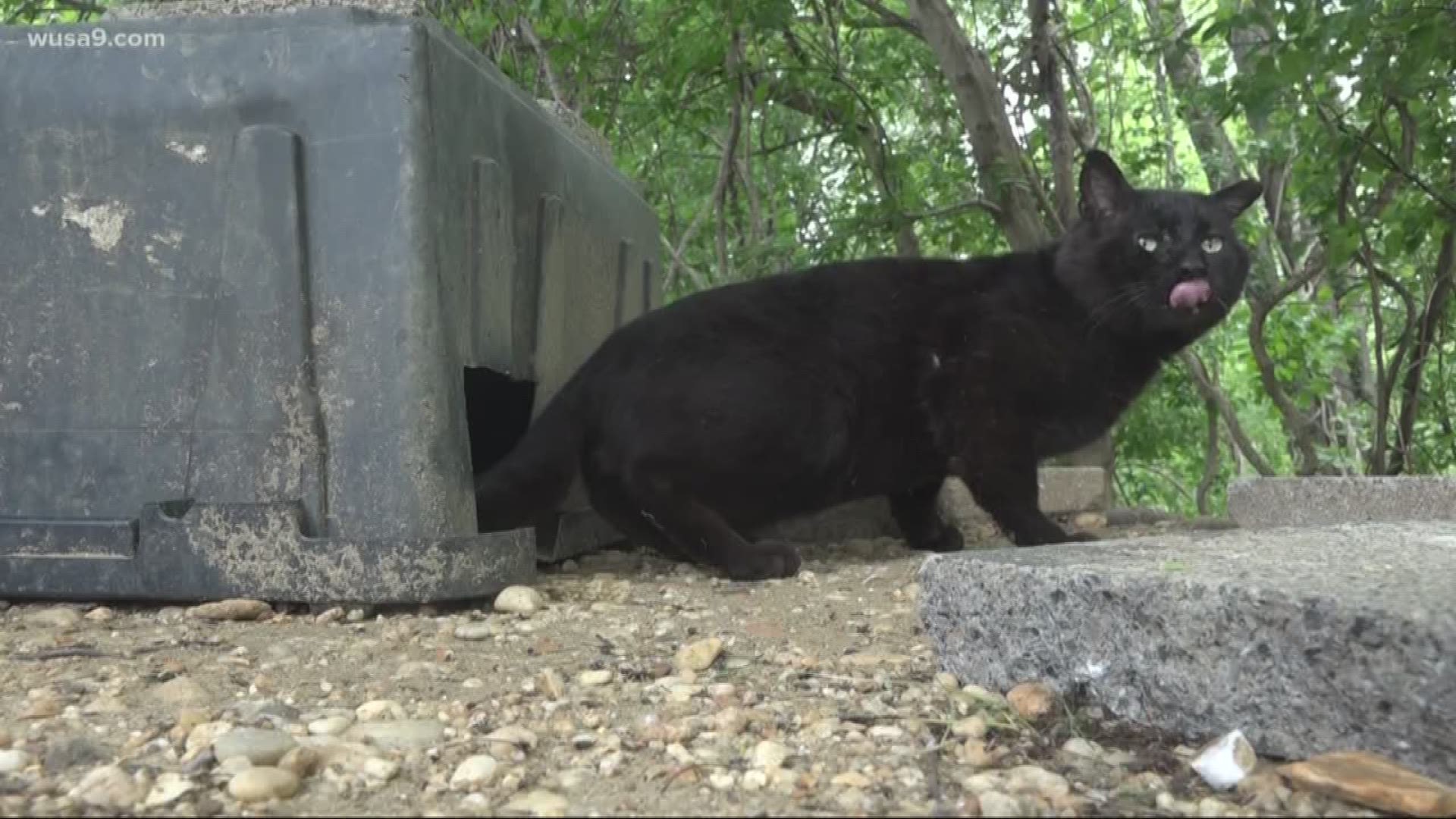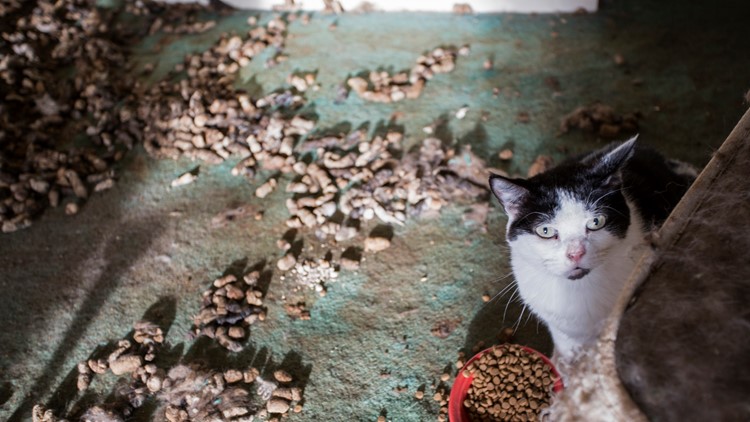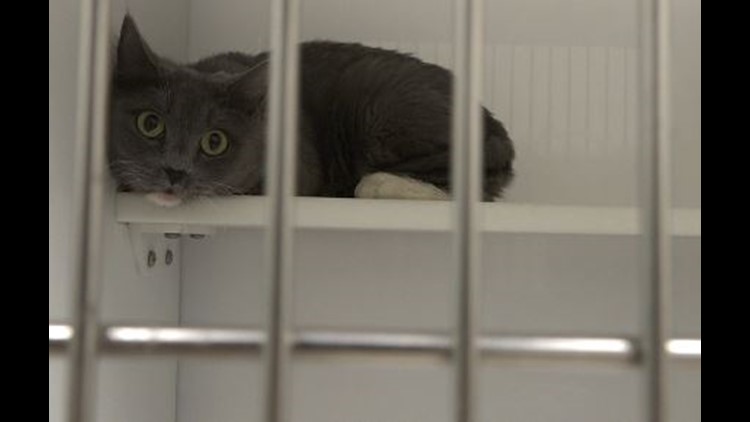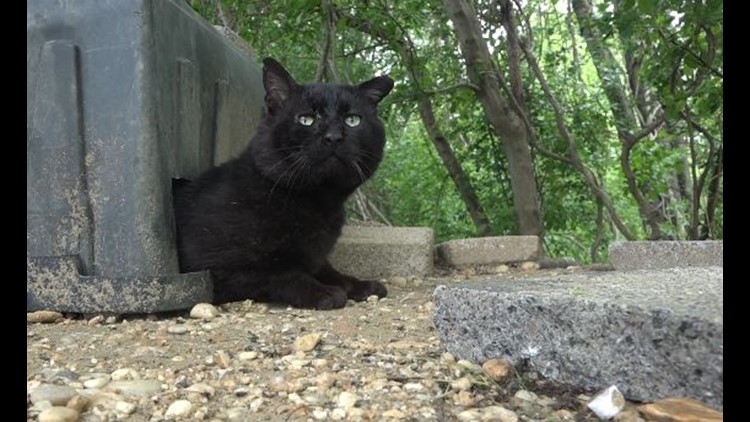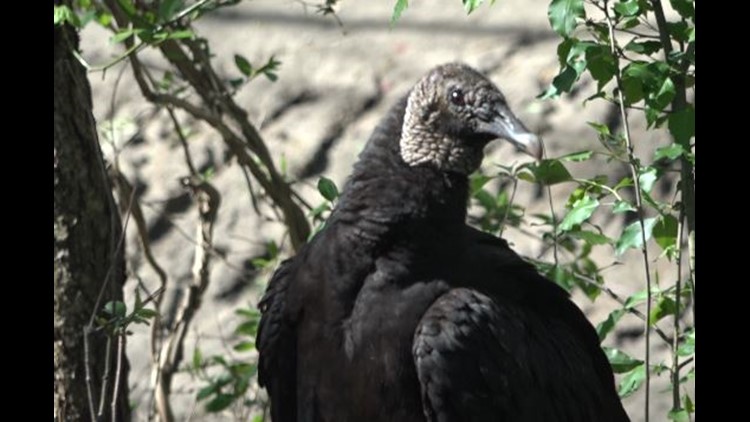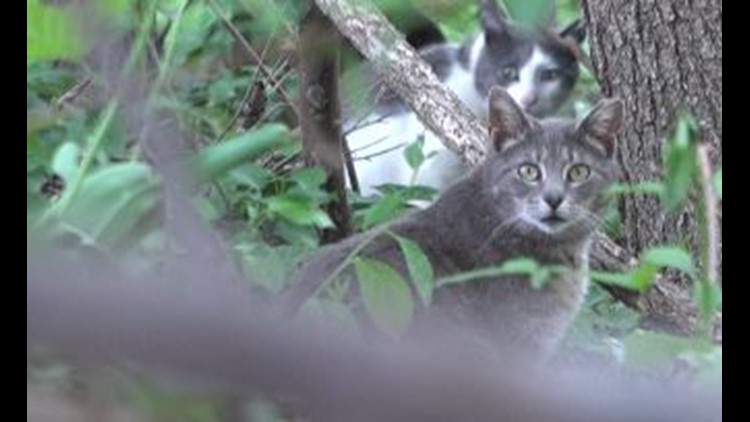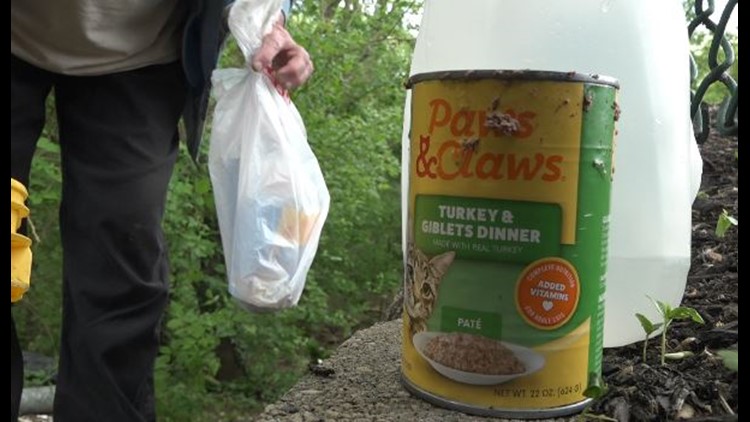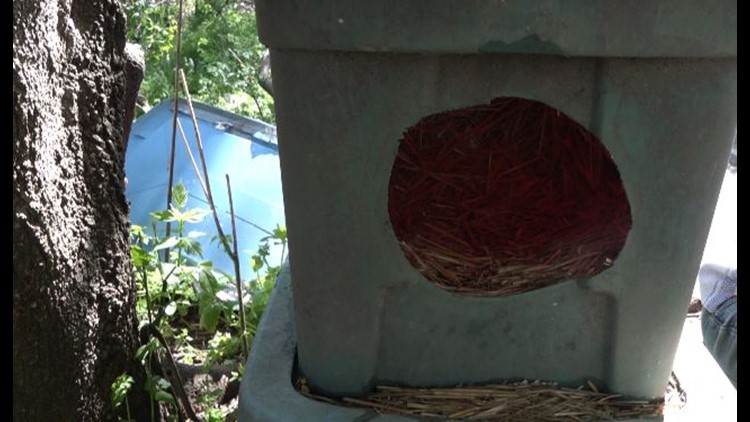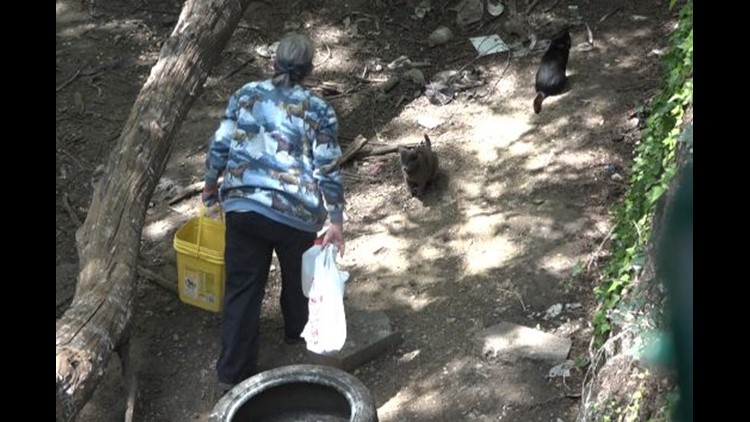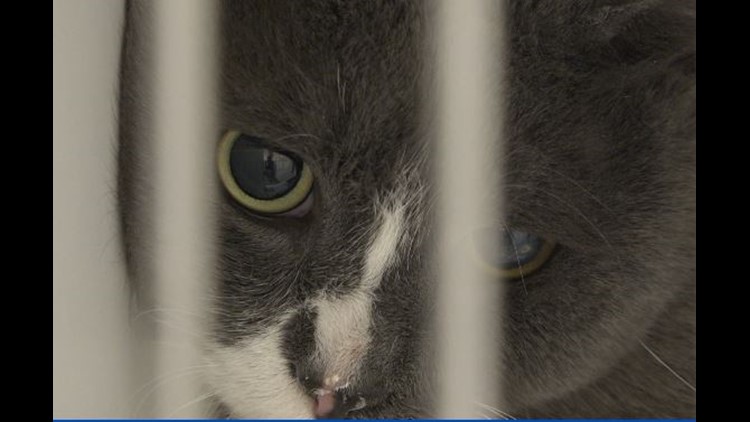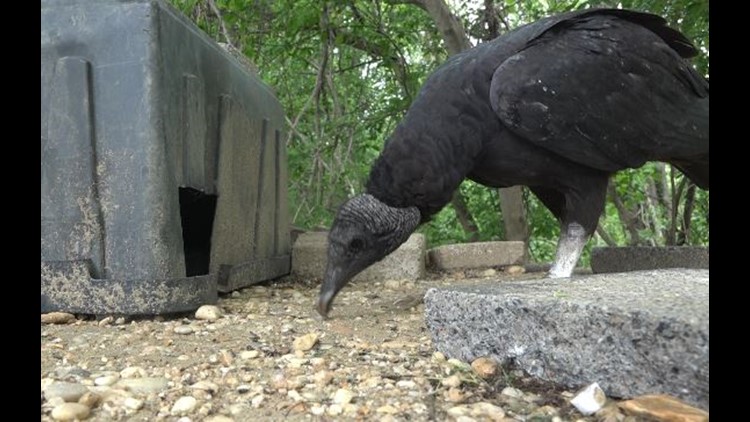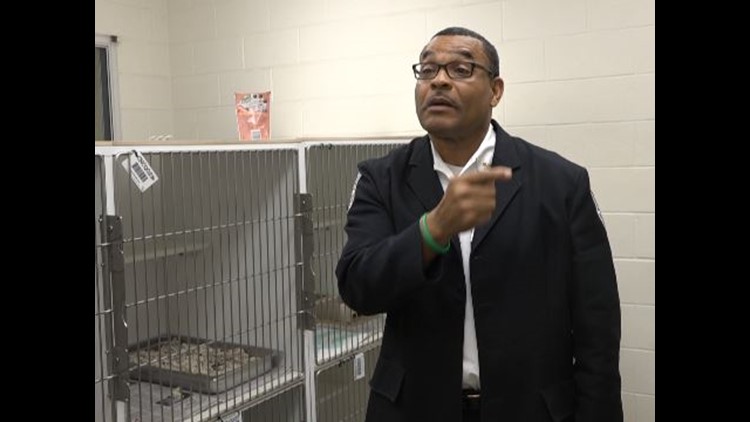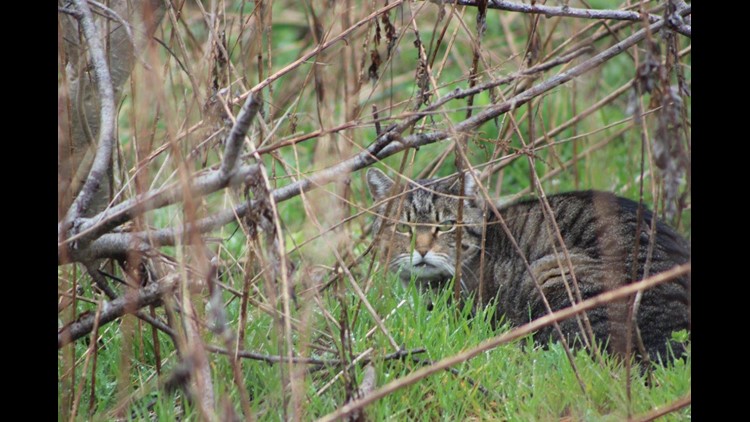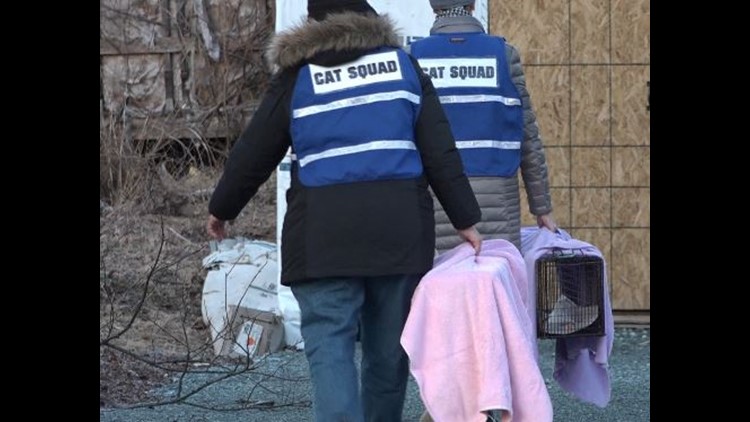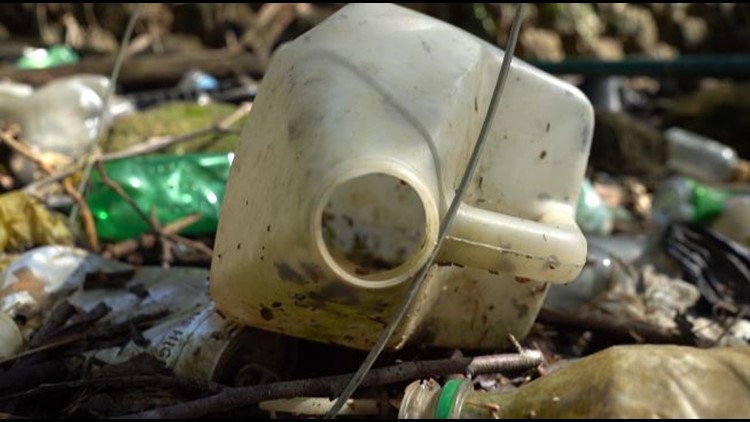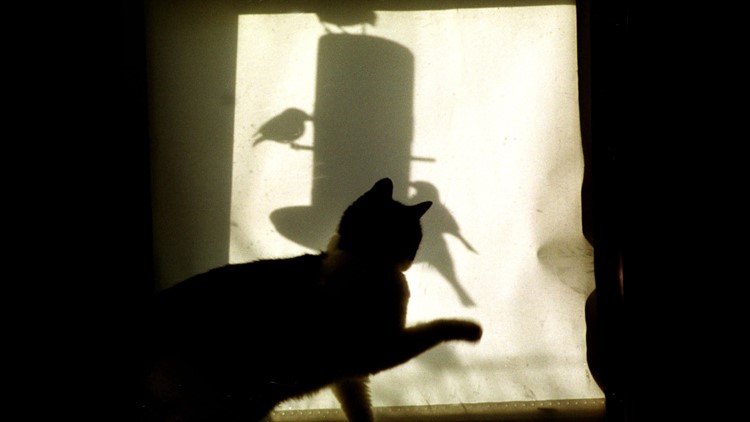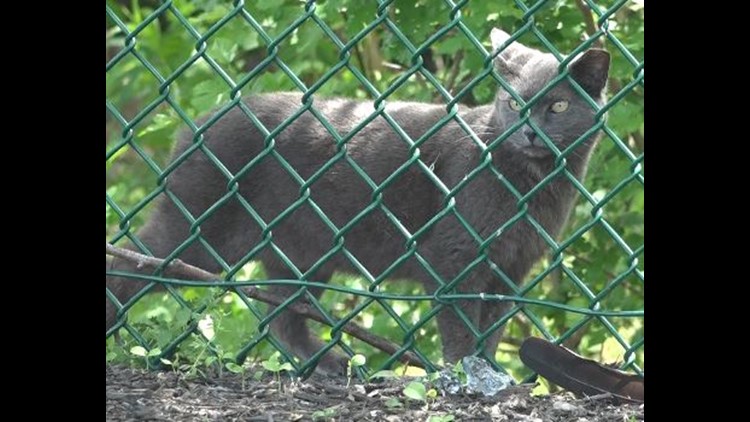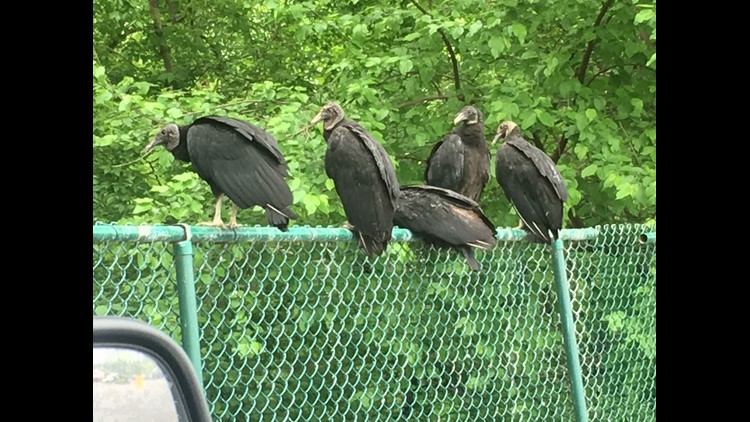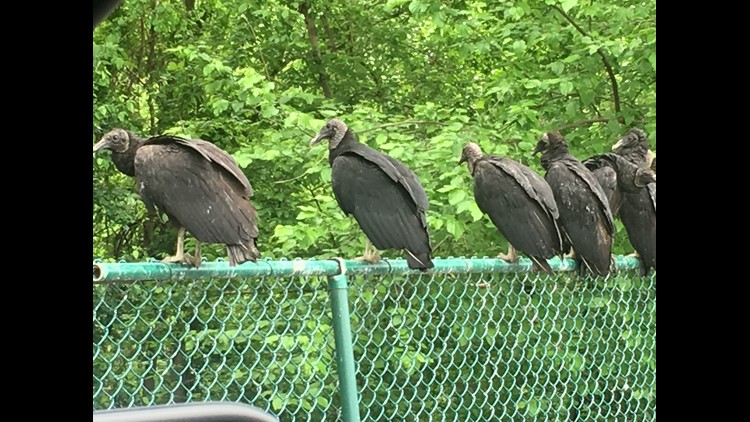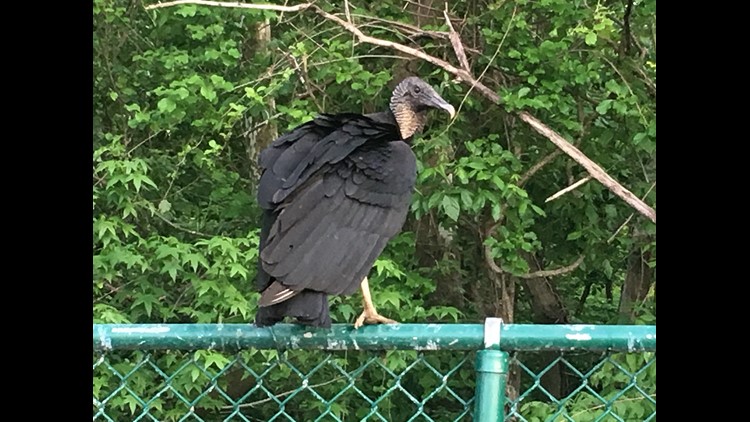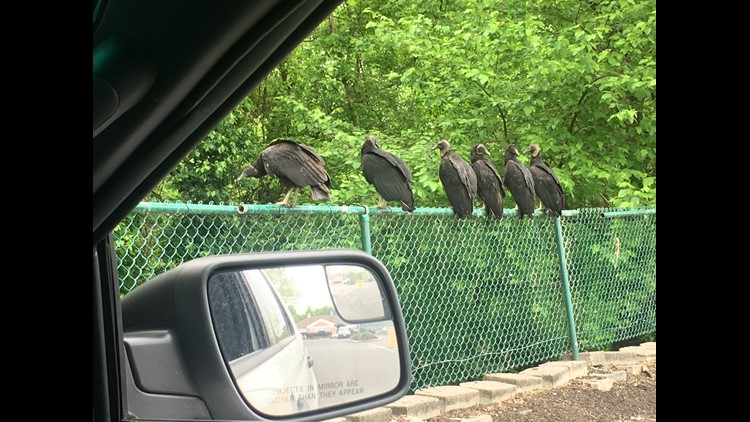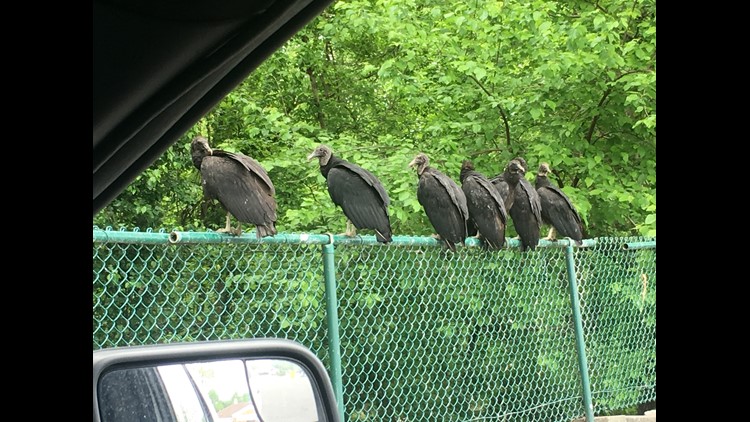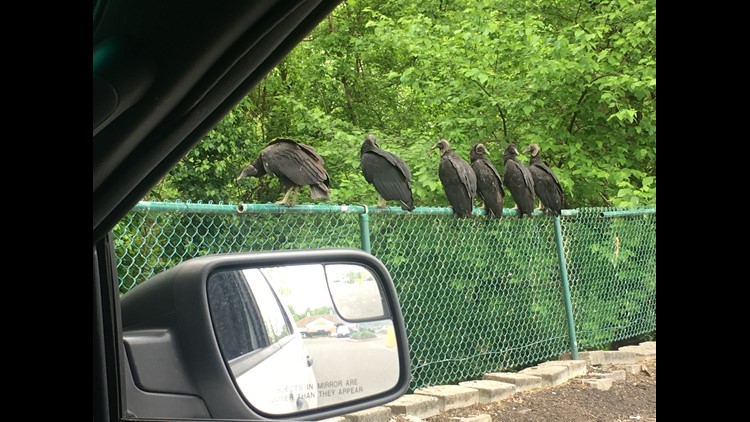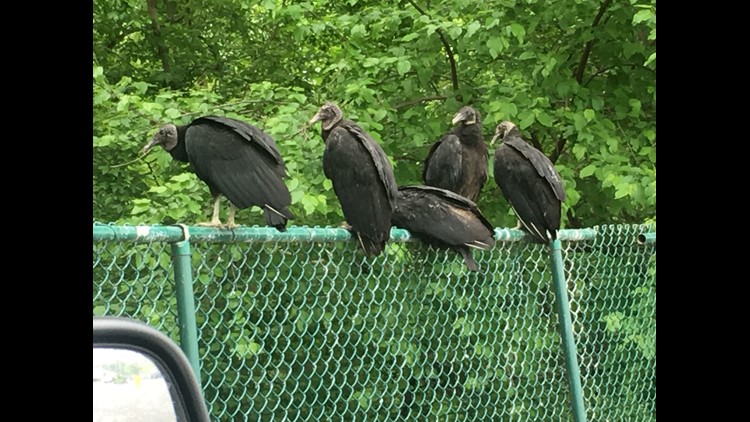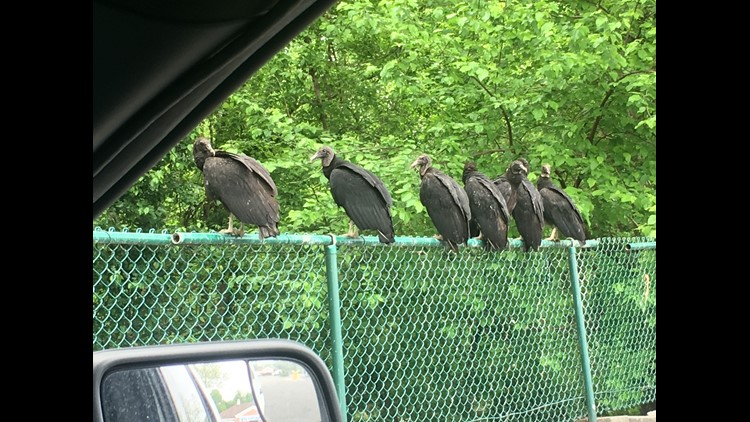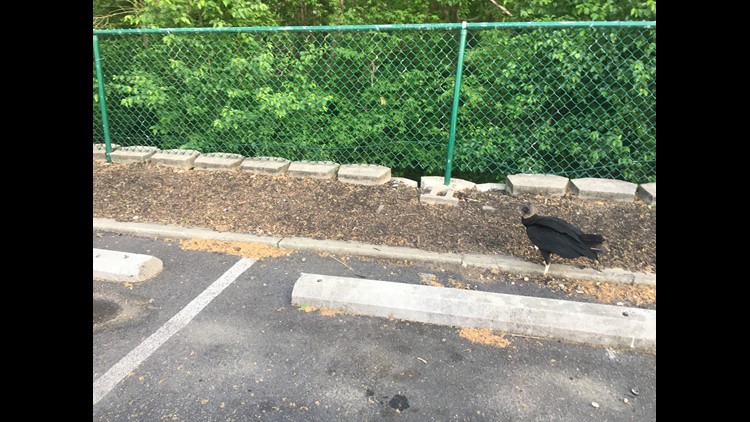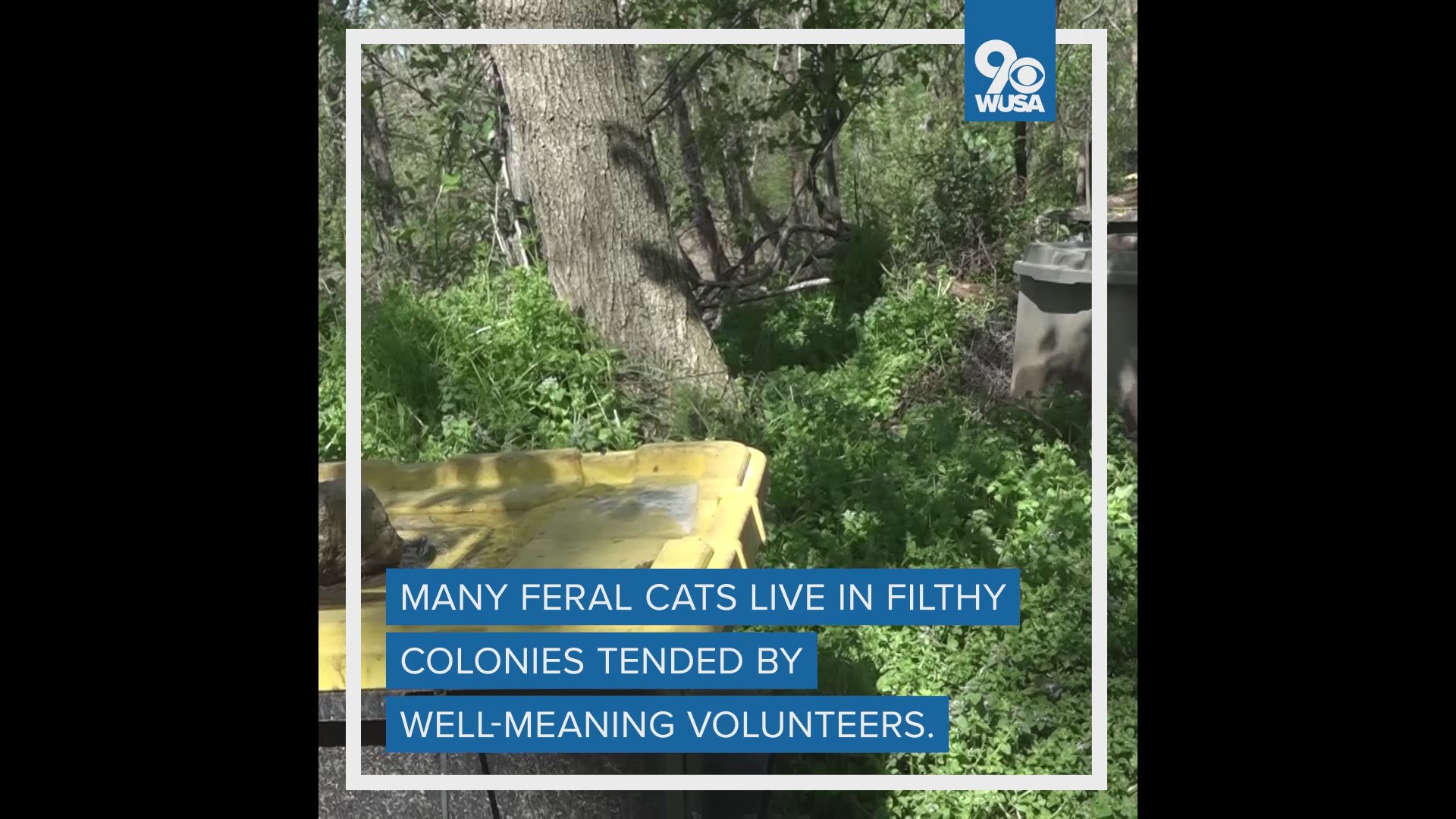UPPER MARLBORO, Md. — Marian Parker pulled her small Hyundai into the parking lot of an Upper Marlboro, Md. strip mall and started her daily mission.
In the cluttered back seat, rested an empty cat cage, several bags of dry pet food, and cases of 22-ounce 'Paws and Claws Turkey and Giblets' dinner cans.
Parker comes daily to feed a colony of about 20 feral cats.
The animals live in a trash-filled, muddy, no-man’s land in the forest behind the shopping center along the banks of the Western Branch near the busy intersection of Routes 301 and 4.
Parker and others have set out overturned plastic storage tubs filled with flea-infested straw in the muddy woods to shelter the cats. Holes are cut in the plastic for the cats to enter.

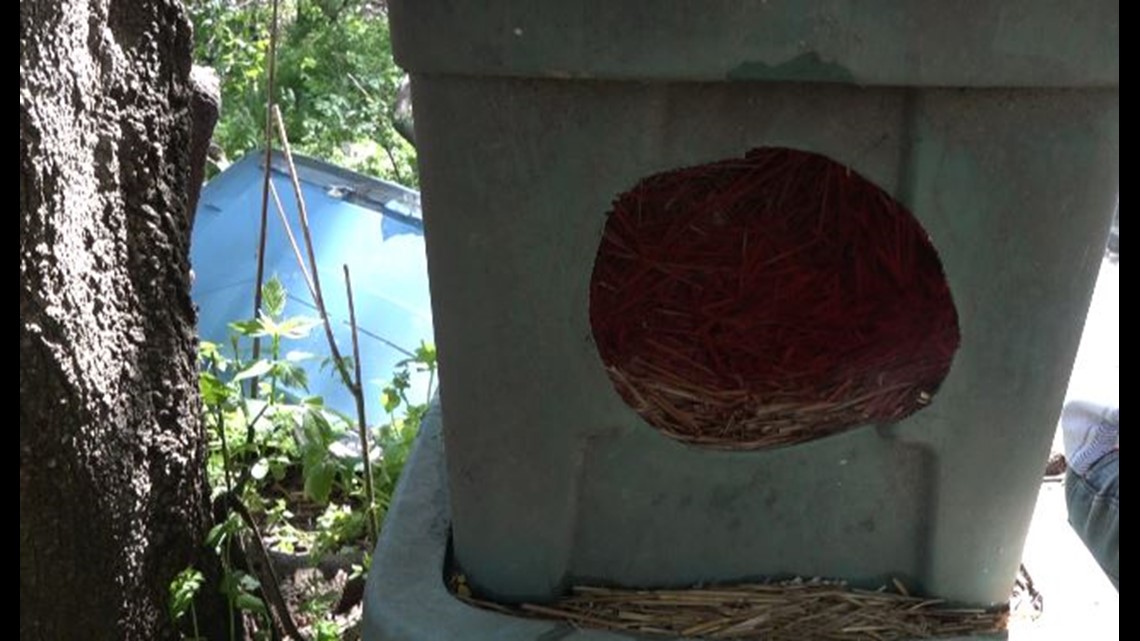
Other tubs with access holes are used to cover food in a largely unsuccessful attempt to keep other wildlife from stealing it.
The area is beset by a large flock of black vultures that roosts above the feral cat colony to steal the food put out by Parker and others.
The birds frequently defecate on cars parked too close to the trees.
The place stinks of cat urine, vulture feces and rotting food. It is a breeding haven for mosquitoes and ticks.
The odor drifts toward a fast food restaurant and a supermarket where some patrons in the parking lot recoil at the smell and the sight of vultures roosting over cats hiding between piles of trash.

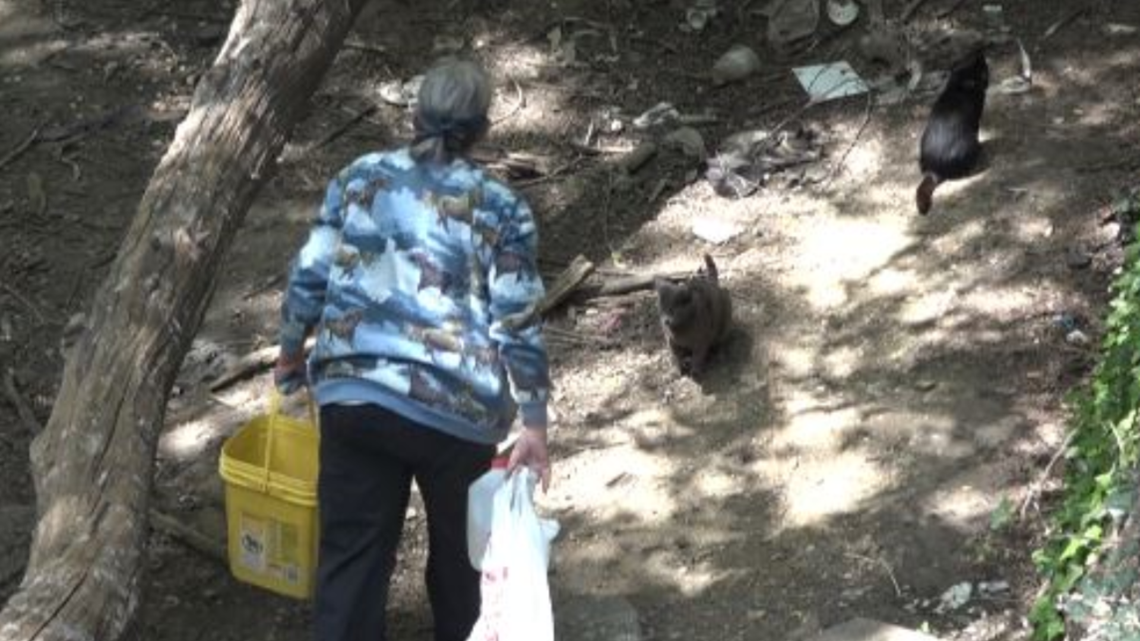
"I've been doing it because they are going to starve to death," Parker said. "They're not going to do well. It's the only humane thing to do."
Parker said people dump unwanted cats in the parking lot because they know she will care for them and because they don't want the animals to be euthanized by animal control officials.
Well-meaning but misguided?
Wildlife biologists and animal health experts believe Parker and the uncounted volunteers who maintain hidden feral cat colonies in the D.C. region and across the nation are well-meaning, but seriously misguided.
The conditions are anything but humane for the cats, according to Grant Sizemore, a conservation biologist who is Director of Invasive Species Programs for the American Bird Conservancy.
"Cats are sharing food with raccoons, foxes, skunks or rats," Sizemore said. "There's a high likelihood for injury and for transmission of disease, one of them being rabies."
The American Bird Conservancy's primary concern is the stunning impact that free-roaming cats have on the environment, specifically native bird species.
Cats are killers
A landmark 2012 study co-authored by Peter Marra, the chief of the Smithsonian’s migratory bird center, found that as many 1.3 to 4 billion native birds in the US are killed annually by free-roaming cats.
Marra’s work, which included an analysis of 50 years of studies on cat predation, changed the conversation on feral cats. He has since settled on a more precise estimate of 2.4 billion birds killed annually.
Indeed, aside from vultures and sea gulls which are too large for cats to take down, the only birds seen anywhere near the filthy cat colony in Upper Marlboro on multiple visits by WUSA9 was a single robin high in one tree.
It was an unusual circumstance in an area with ample food and open dumpsters, which normally attract flocks of house sparrows and starlings when cats are not present.
"They're instinctive predators and they’ll hunt and kill wildlife regardless of whether they are hungry," Sizemore said. "Cats have actually contributed to the extinction of 63 species in the wild."

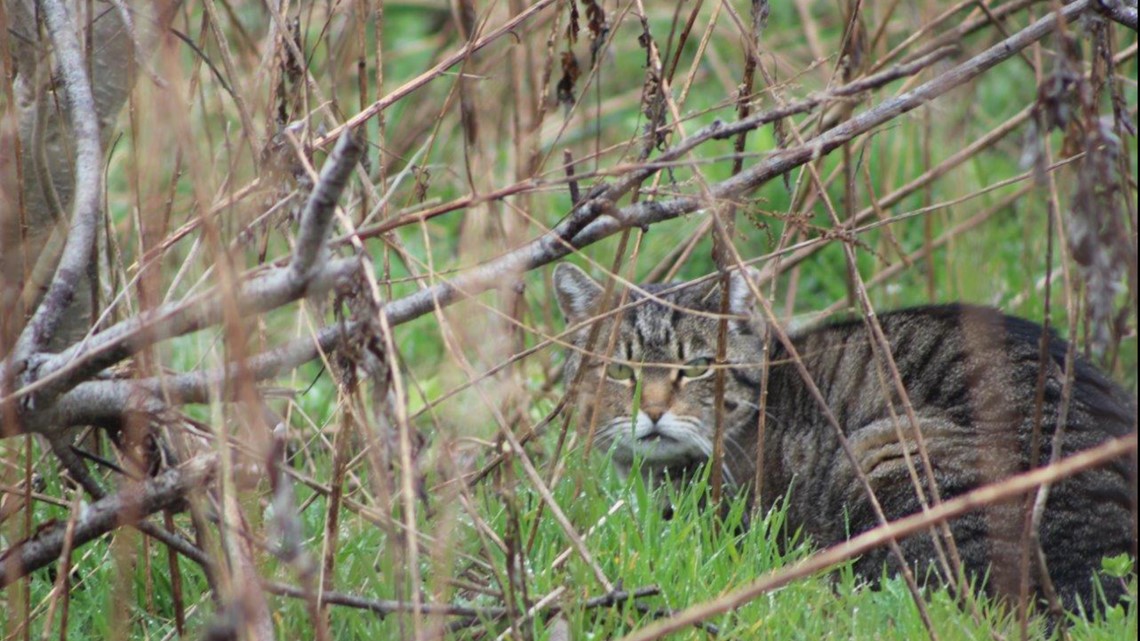
40 million feral cats
The Humane Society of the United States estimates there are as many as 30 to 40 million free-roaming or feral cats in the US.
Rodney Taylor, the chief of the Prince George's County Animal Services Division, said he cannot estimate how many feral cats are in the county. Taylor said his officers handle as many as 1,400 of them each year, which is likely only a small percentage of the cats that are on the loose.
The problem is not unique to Prince George’s County, the D.C. region, or the US.
Cat lovers have been shocked by a policy announced by the Australian government to eradicate as many as 2 million feral cats on that continent because of the impact on the unique environment there. The cats are routinely hunted down and shot, which would be illegal under any circumstance in Maryland.
Feral cats: nuisance or in need of help?
Solutions
Many local feral cat colonies are tended to by volunteers who advocate for a policy called Trap, Neuter and Release, or TNR.
According to Taylor, among the most successful programs in Prince George's County, is one operated by Laurel Cats and its energetic volunteer director Helen Woods.
One chilly evening in early spring, Woods, who operates a flight school, and volunteer Stephanie Kenez, who is an FDA scientist, set off to capture six feral cats living on a private property off Whiskey Bottom Road.
The property is occupied by a home surrounded by outbuildings and rusting garden equipment and is one of nearly 300 locations with feral cats tended by volunteers in Woods' Laurel network.
The captured cats will be taken to a veterinarian to be spayed or neutered and vaccinated. The vet will also clip a tab off one of the cats' ears so that it can be identified in the future as a TNR cat.
Woods then returns to the colony and releases the cats, over the objections of wildlife biologists who view the felines as a destructive invasive species whether they are spayed and neutered or not.
"In colonies where we have been working to spay and neuter the cats, the population has been declining every year," Woods said.

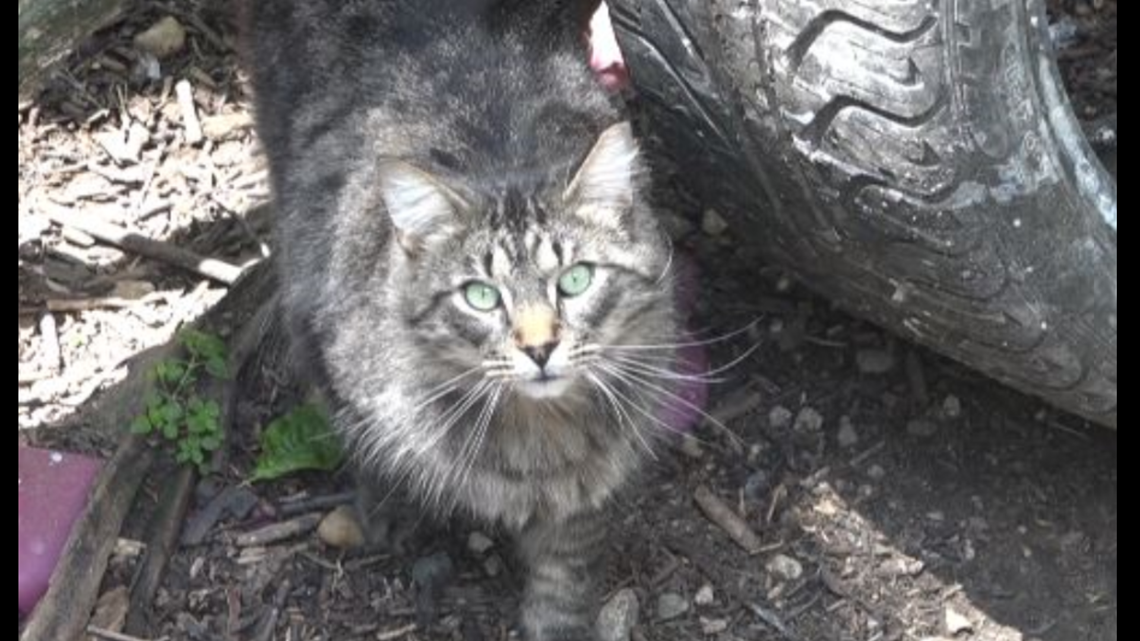
A 2018 winter census conducted by the organization found that the feral cat populations in the Laurel area declined by 38 percent between 2014 and 2018.
Complaints to Prince George’s County Animal Services declined 63 percent, and fewer cats are being euthanized by Animal control officials, according to the report.
"This is a group that is doing it right," said Taylor, the Prince George’s County Animal Control chief.
Woods is straightforward about the wildlife issue.
"Yeah, cats eat birds. They do," she said. "Which is why we’re trying to eventually eliminate outdoor cats by spaying and neutering these cats out of existence in the outdoors."
The TNR catch-and-release model may have flaws, but it’s the only practical solution, according to Woods.
"You can't do it by catch and euthanize, which is what a lot of these (environmental) groups argue," Woods said. "These cats are living on people's property, private property, being cared for by these individuals and they’re not going to let you on the property and let you kill their cat."
The science
Wood's results with TNR are confirmed by Prince George's Animal Control officials, but scientific studies conflict on whether or not TNR programs are effective.
One of the most frequently cited studies supporting TNR was a 2003 analysis of a feral colony at Central Florida University which found "a comprehensive long-term program of neutering followed by adoption or return to the resident colony can result in reduction of free-roaming cat populations in urban areas."
But the study has been criticized for failing to account for realities that occur in most feral colonies.
"The problem is that, for TNR to succeed in large populations, at least 75 percent of cats in a colony must be sterilized. That rarely happens," according to Smithsonian.com. "The trouble is that negligent pet owners continue to abandon pet cats, which then join existing colonies; additionally, non-neutered stray cats can wander in. Like efforts at vaccinating schools against chickenpox, just a few stragglers can undermine an entire TNR program. Any short-term reduction in colony size is therefore quickly reversed."
A comprehensive analysis of 90 studies on feral cat colonies published in the journal Conservation Biology concluded, "TNR does not eliminate feral cat colonies under prevailing conditions and many false claims used to support the approach go unchallenged."
The analysis urged policy makers to conduct reviews of environmental effects before supporting TNR programs in their communities.
"We urge greater engagement from conservation scientists at local to national levels to communicate that management of feral cats is not just an animal welfare issue," the scientists wrote.
TNR gets state money
National organizations such as Alley Cat Allies aggressively promote TNR as a solution to the feral cat problem.
In Maryland, advocates of TNR have gained the support of legislators who in 2018 budgeted more than $800,000 for the Department of Agriculture to give grants to volunteer groups doing TNR programs in the state.
However, ordinances in most counties have not caught up, according to a survey by the Department of Agriculture. Most jurisdictions prohibit stray cats and allow animal control authorities to seize them.
Prince George's also prohibits strays, but has modified its local ordinances to acknowledge TNR colonies. TNR groups such as Laurel Cats are contacted whenever animal control workers or citizens capture a cat that has a clipped ear, which indicates it has been previously trapped and handled by a TNR group for spaying, neutering and vaccination. The group is given three days to come rescue and re-release the cat.
Adoption is not an option for the vast majority of ferals, Taylor said. They are simply too wild. Those that are not taken back by TNR groups are frequently euthanized.

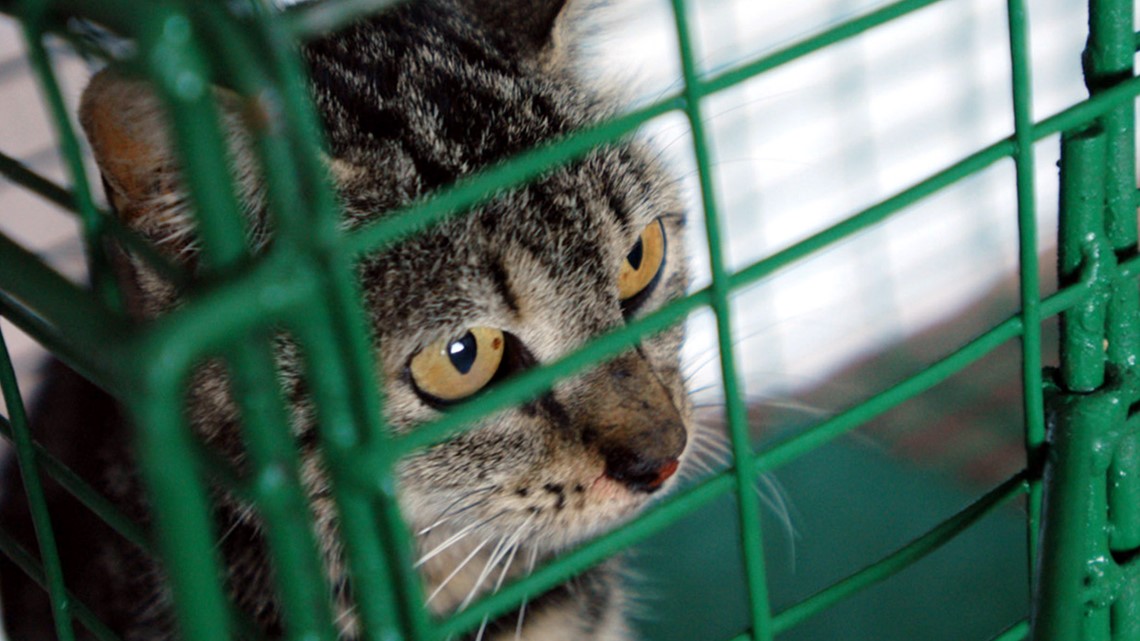
Why is it OK for cats?
As he toured the feral cat colony in Upper Marlboro, Grant Sizemore, the conservation biologist with the American Bird Conservancy, wondered why communities and local governments are willing to tolerate cat colonies when the environmental cost is so high and other abandoned animals would not be allowed to live in such conditions.
"This is unacceptable behavior for dog owners. Why is it OK for cats?" Sizemore said. "Why are we allowing these colonies or packs essentially of feral animals, cats in this case, to run around the environment? We don't do it with dogs."
"What they are really doing, though they may have the best of intentions, is they are facilitating a public nuisance," Sizemore said.

